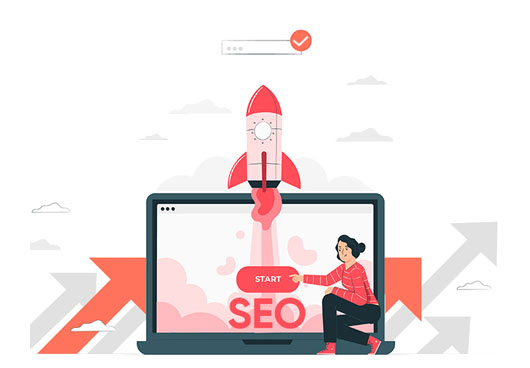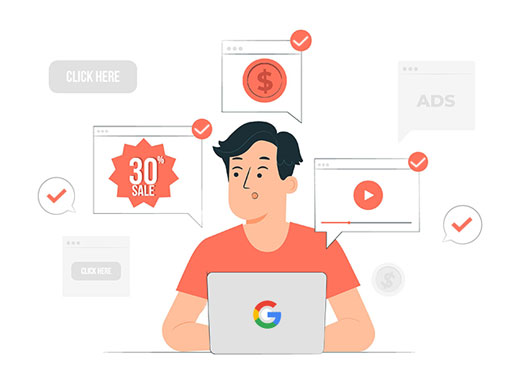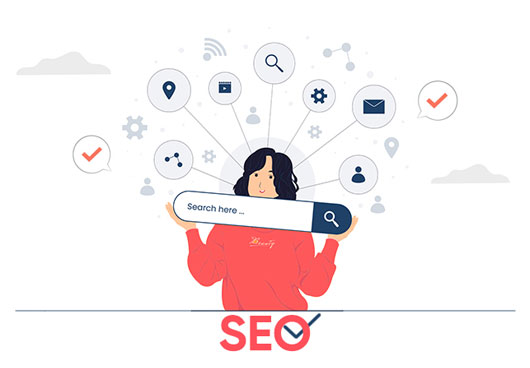Why you should Analyze your Business Goals before you Implement SEO
Contributors:
Amol Ghemud
Published: August 14, 2018
![]()
Imagine having a shop without having any signage onto it – no name, no windows, no shopfront, nothing in particular. You would expect people may drop in out of curiosity, looking for product A, whereas you are selling product B. Now, when you have a shop with a proper name and probably the product image on it, this would attract so many people off the street, and they would ask for what you sell, and some of these customers would tell other potential targets about their buying experience and about your products and your shops.
In the above example, the first scenario is related to a website that is not optimized, while the second one relates to an optimized website.
Do you want to optimize your website, drive more traffic and deliver higher conversions? This is a checklist that we follow, and can get your site to rank consistently on top of search engines. Download this ultimate SEO Checklist which includes On-Page SEO as well as Off-Page SEO techniques that will help you rank well on the search engines.
SEO (Search engine optimization) is the process of making a web page easy to find, easy to crawl, and easy to categorize. It implementation helps the customers find out your business from among thousand other companies. SEO is an integral part of any digital marketing strategy.
It is essentially concerned with a holistic move towards driving customers to your business via online platforms. And to do that, one must ensure the website ranks higher in the SERP (search engine result page).
To give you an idea on this, let’s start with this fact – nearly 14 billion searches online take place every month.
The advent of Globalized economy makes every business to have an online presence a must. Just imagine a fraction of those 14 billion searches happen for your business.
To achieve that benchmark, your website must rank higher in the SERP, must perform well in the social media marketing, and the PPC (pay per click) activities must be very well along with other digital marketing tasks.
For any business, advertising is of utmost need. When any business goes online, the advertising works best to garner a huge amount of web traffic. SEO implementation gives an opportunity for a great deal of free advertising.
A properly implemented SEO technique makes a website rank in the first page of SERP as the common belief is people generally scan and review the first two pages of the SERP.
Business Goals are SEO Goals
Let’s start by identifying your business goals. What are you trying to achieve from your business? Why did you create your website at first place?
The most frequent replies to these questions are: “To sell my products.” or “To find new customers online.” Therefore, you don’t really define success by solemnly being on the first page of the Google’s search results.
Imagine you own a small startup and you’ve just created your website. You probably did it because you want to sell more of your products and services to as many new customers as possible.
You also have a blog, and you’d like more people to read and share your content. And you’d like to build relationships with existing customers by offering them engaging content that they will react to and share — and hope they eventually return to buy from you.
Below we have identified some of the SEO goals you can set up for your business.
1 Acquisition: Getting new visitors.
2 Conversions: Turning website visitors into paying customers.
3 Content Reach: Getting more visitors to find and read your content.
4 Content Engagement: Getting more visitors to interact with the content on your site.
If you observe the goals listed above, it can be seen that, this are the goals for your startup. Implement SEO techniques makes it possible to realize this goals for your businesses.
In order to know if your SEO implementation efforts are successful of not you need to look back at your SEO goals and objectives and measure them.
Parameters to consider for implementing SEO
Here are a few points you need to consider when you implement SEO strategy:
Who is in your target market?
It’s not just about grabbing as much traffic as possible, but instead it is about attracting high-value visitors interested in what you offer. In terms of demographics, what is your target market searching for? In what manner are they performing web searches? Where are they located? The more specific your answers, the more valuable your investments in SEO become. Google Analytics is a good place to start your investigations!
Geographic conditions and the customer demographics are of utmost importance as to where and how you will get your customers. Fine tuning on these parts will make you confident and successful going forward.
Most people search on mobile devices
One does not need statistics to show that in the past few years the online mobile market has exploded, overtaking desktops years ago. The website of your startup or business should be able to properly fit into mobile and give equal satisfactions to your customers the way they access your site in their personal computers.
It is critical to optimize websites for mobile browsers if you want to rank well in search engine results pages. If you’re unsure how your website measures up, enter your site’s URL in Google’s Mobile-Friendly Test.
Keywords to correspond with your ROI
Spend time on fixing relevant keywords. Focus on Long Tail keyword as those define users’ behaviours. You should think in detail about how you can frame long tail qualities into your key phrases. Return on investment (ROI) is very important parameter to measure the success of keywords.
Implement local SEO by using the keywords from the geography where your target market is located.
More options in Search Engines
Your website should not only perform well in Google, but in every other search engines like Yahoo, MSN, AOL, and DuckDuckGo. Each search engine has different search algorithms that you need to know and accordingly make your website compatible for these searches. Your users may come from any roads.
Clear website and quality content
A user-friendly website, clear navigation, SEO keywords, optimized Meta tags, title tags, and balanced keyword density in the qualitative, relevant, and consistent content will always reign over a highly prices SEO implementation.
Each page needs to be built around keyword themes, with unique content, so search engines can easily index yours and rank you higher.
Positive behaviors from site visitors is your best bet for a better ranking, so keep the content natural and focused; avoid jargon and keyword stuffing to keep users from leaving the site unhappy and hurting its ranking. There should be no keyword stuffing as well. “Content is a commitment, not a campaign.”
Links to your site are extremely valuable
When another website links to yours, search engines consider that an indicator that your site contains valuable content. Not so long ago, getting dozens of links from low-quality sites was all it took to boost your ranking.
Today, the value of a link to your site depends on the quality of the site that linked to you. Just a few links to your business from high-traffic sites will do wonders for your ranking!
Social media has a pivotal role
Last but not least, social media is an evolving platform. It has changed from a basic communication platform to a highly profitable marketing channel.
Many users start their searches on social media and make their way to a business’s site. To attract more customers and people in general to your profile and then onto your website, one must share up-to-date, engaging, and personalized content.
Conclusion
The algorithms are changing every time and bring up new challenges. One thing you should always remember– there is no static SEO system that is going to stay forever as “SEO is a never-ending process.” With changing online customer behaviour, search engines, too, have developed different policies.
But you are to realistically think about your target audience. Their preferences and dislikes, usability of the website, and well-thought optimization plans. Some may think only about ranking in the SERP without even bothering about their users.
This means you really can’t afford to approach each campaign individually. The most successful brands integrate all their campaigns that ensures there’s always something pushing their leads one step closer to converting into a customer.
About the Author
Optimizer in Chief
Amol has helped catalyse business growth with his strategic & data-driven methodologies. With a decade of experience in the field of marketing, he has donned multiple hats, from channel optimization, data analytics and creative brand positioning to growth engineering and sales.
 Digital Marketing Bootcamp
Digital Marketing Bootcamp Go-To-Market Strategy
Go-To-Market Strategy Growth Hacking
Growth Hacking Family Owned Business
Family Owned Business Organic Growth
Organic Growth Paid Growth
Paid Growth Inbound Growth
Inbound Growth Social Growth
Social Growth
 Case Study
Case Study Custom GPT's
Custom GPT's




















Leave a Reply